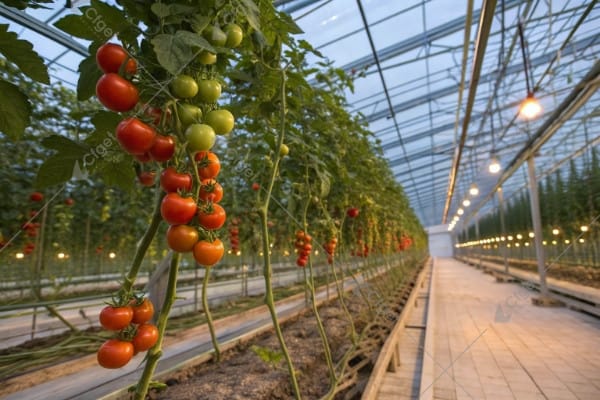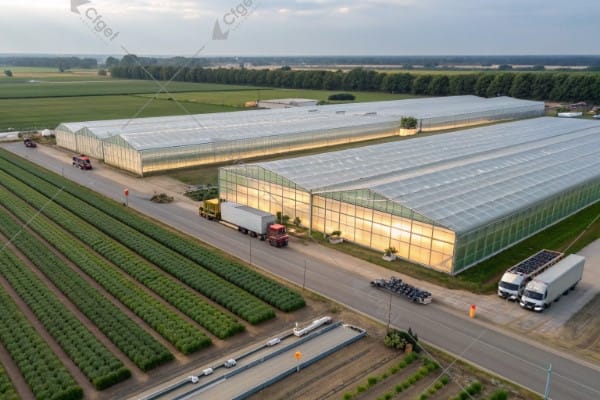Choosing the right greenhouse glass can make or break your growing operation. Poor glass selection leads to energy waste, plant stress, and costly replacements.
The right greenhouse glass combines light transmission, thermal efficiency, and durability to create optimal growing conditions. Modern options include tempered, insulated, and diffuse glass, each serving specific agricultural needs and climate requirements.
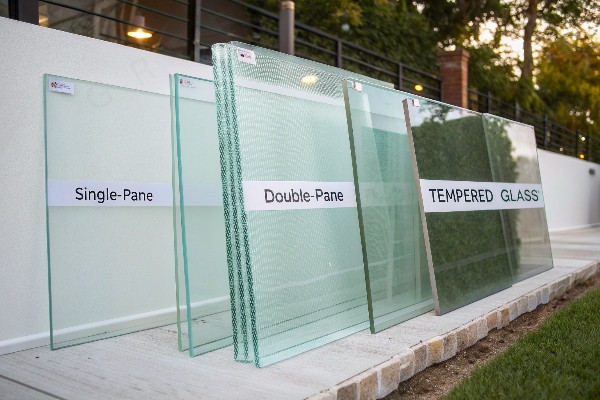
After 29 years in the greenhouse industry, I’ve seen countless growers struggle with glass selection. The difference between success and failure often comes down to understanding how glass properties affect plant growth, energy costs, and long-term maintenance.
What are the Five Core Essential Features for Greenhouse Glass?
Glass selection determines everything from light quality to heating bills. Many growers focus only on price, missing critical performance factors that affect their bottom line.
The five essential features are light transmission, thermal insulation, impact resistance, UV protection, and maintenance requirements. Each feature directly impacts plant health, energy efficiency, and operational costs in your greenhouse.
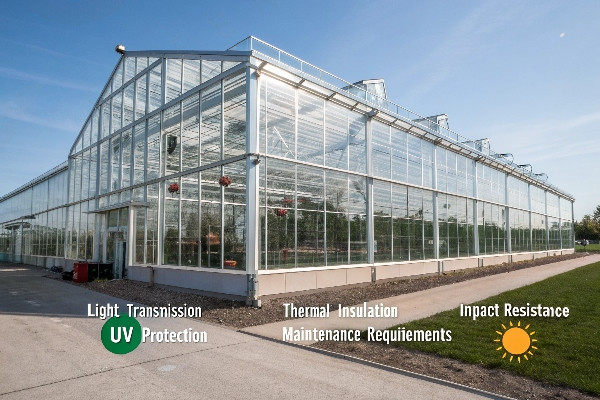
Light transmission stands as the most critical feature for any greenhouse glass. Plants need specific light wavelengths for photosynthesis, and glass must allow maximum beneficial light while filtering harmful radiation. Standard clear glass transmits about 90% of visible light, but this varies significantly with thickness and coatings. I remember visiting a tomato grower in Netherlands who increased yields by 15% simply by switching from standard glass to high-transmission glass with 95% light transmission.
Thermal insulation properties determine your heating and cooling costs throughout the year. Single-pane glass offers minimal insulation, while double or triple-pane systems can reduce energy consumption by 30-50%. The U-value measures thermal conductivity – lower numbers mean better insulation. For example, single 4mm tempered glass has a U-value around 5.8 W/m²K, while double-pane insulated glass drops to 2.8 W/m²K.
Impact resistance protects your investment from weather damage and accidental impacts. Tempered glass breaks into small, safe pieces rather than dangerous shards. This feature became crucial for one of our clients in Philippines, where frequent typhoons previously caused extensive damage to their orchid greenhouse. After switching to tempered glass, they experienced zero breakage during subsequent storms.
UV protection prevents plant damage from excessive ultraviolet radiation while allowing beneficial wavelengths through. Some crops require UV filtering, while others benefit from controlled UV exposure. The glass coating or treatment determines UV transmission levels, typically blocking 90-99% of harmful UV-B radiation.
Maintenance requirements affect long-term operational costs and labor needs. Easy-clean coatings reduce cleaning frequency, while textured surfaces may require more frequent maintenance but offer better light diffusion. The choice depends on your specific growing conditions and labor availability.
Glass Selection for Different Greenhouse Locations: What’s the Difference for Roofs and Side Walls?
Roof and sidewall glass face different challenges and serve distinct functions. Weather exposure, structural loads, and light angles create unique requirements for each location.
Roof glass prioritizes weather resistance and light transmission, while sidewall glass focuses on insulation and structural support. Different thicknesses, coatings, and glass types optimize performance for each specific greenhouse location.
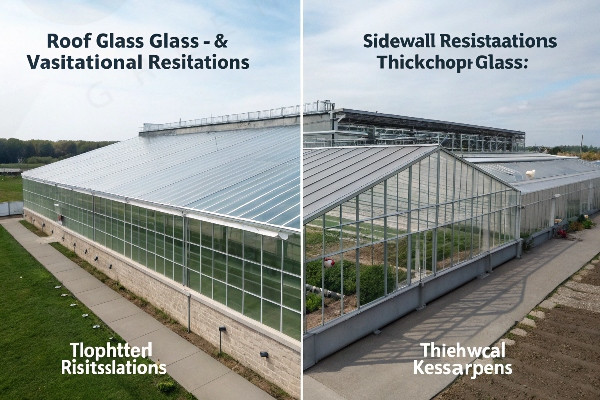
Roof glass bears the brunt of weather exposure, requiring maximum durability and weather resistance. Hail, wind, and thermal expansion create constant stress on roof panels. Tempered glass thickness typically ranges from 4-6mm for standard applications, with thicker options for extreme weather zones. The glass must handle snow loads, wind uplift, and thermal cycling without failure.
Light transmission becomes more critical for roof glass since it receives direct sunlight throughout the day. Diffuse glass works exceptionally well for roof applications, scattering harsh direct sunlight into soft, even illumination. This reduces plant stress and eliminates hot spots that can damage sensitive crops. One flower grower in Kenya switched to diffuse roof glass and saw 20% reduction in flower burn damage during peak summer months.
Sidewall glass serves different purposes, primarily providing structural support and thermal insulation. These panels face less direct weather exposure but must withstand wind loads and provide insulation against temperature fluctuations. Insulated glass units work well for sidewalls, offering superior thermal performance compared to single-pane options.
The angle of sidewall glass affects light transmission differently than roof glass. Vertical or near-vertical sidewalls receive less direct sunlight, making thermal properties more important than maximum light transmission. However, morning and evening sun angles can create intense heat gain through sidewalls, requiring careful consideration of solar heat gain coefficients.
Installation methods differ significantly between roof and sidewall applications. Roof glass requires weatherproof sealing systems to prevent leaks, while sidewall glass needs structural glazing systems to handle wind loads. The glazing bars, gaskets, and support structures must match the specific requirements of each location.
How to Evaluate the Cost-Effectiveness and Long-Term Benefits of Greenhouse Glass?
Initial glass costs represent only a fraction of total ownership expenses. Energy savings, maintenance costs, and productivity impacts determine true cost-effectiveness over the greenhouse lifespan.
Cost-effectiveness analysis must include initial costs, energy savings, maintenance expenses, and productivity gains. Premium glass options often pay for themselves through reduced energy bills and increased crop yields within 3-5 years.
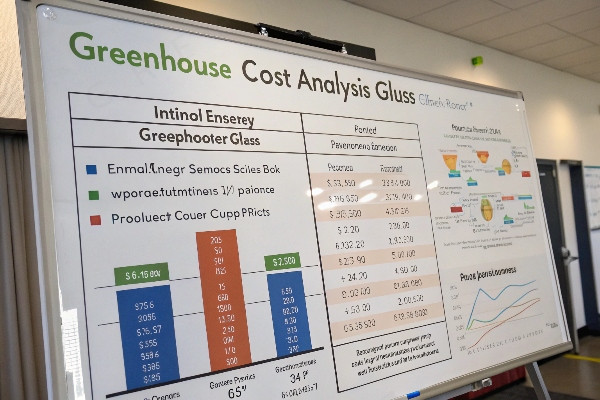
Initial investment costs vary dramatically between glass types. Standard single-pane tempered glass costs approximately $15-25 per square meter, while high-performance insulated glass ranges from $40-80 per square meter. However, focusing solely on upfront costs ignores the bigger financial picture that unfolds over years of operation.
Energy savings provide the most significant long-term financial benefit. Insulated glass can reduce heating costs by 30-50% compared to single-pane options. For a 1000 square meter greenhouse in cold climate, this translates to $3000-8000 annual savings depending on local energy prices. The payback period for premium glass typically ranges from 2-4 years through energy savings alone.
Maintenance costs differ substantially between glass types. Easy-clean coatings reduce cleaning frequency from monthly to quarterly, saving labor costs and improving light transmission between cleanings. I worked with a rose grower in Colombia who calculated $2000 annual savings in cleaning costs after installing easy-clean glass on their 2000 square meter facility.
Productivity impacts often exceed energy savings in total economic benefit. Better light transmission and distribution can increase yields by 10-25% for many crops. Diffuse glass reduces plant stress, leading to more consistent growth and higher quality produce. Temperature control improvements from insulated glass create more stable growing conditions, reducing crop losses from temperature fluctuations.
Durability and replacement costs factor into long-term calculations. Tempered glass lasts 20-30 years with proper maintenance, while standard glass may require replacement every 10-15 years. The higher initial cost of tempered glass spreads over its extended lifespan, often making it more economical than cheaper alternatives.
Insurance and risk considerations affect total cost calculations. Some insurance companies offer reduced premiums for facilities using impact-resistant glass, recognizing the lower risk of weather damage. Storm damage repairs can cost thousands of dollars and interrupt production for weeks, making durable glass a risk management investment.
Common Greenhouse Glass Questions: Thickness, Efficiency, and Cleaning Maintenance?
Glass thickness, efficiency ratings, and maintenance requirements generate the most questions from greenhouse operators. Understanding these factors helps optimize performance and reduce operational problems.
Glass thickness affects strength and thermal performance, efficiency ratings determine energy costs, and proper maintenance preserves light transmission and extends glass life. Each factor requires specific consideration for your growing conditions and operational requirements.
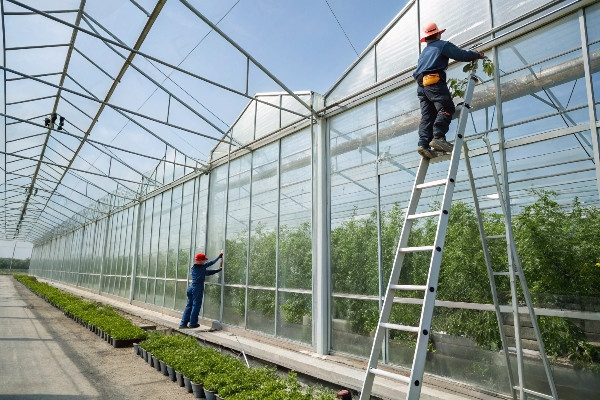
Glass thickness selection depends on structural requirements, weather conditions, and thermal performance needs. Standard greenhouse glass ranges from 3mm to 10mm thickness. Thicker glass provides better impact resistance and thermal mass but costs more and reduces light transmission slightly. For most applications, 4-5mm tempered glass offers the best balance of performance and cost.
Structural calculations determine minimum thickness requirements based on wind loads, snow loads, and panel size. Larger panels require thicker glass to prevent deflection and breakage. A structural engineer should verify thickness requirements for your specific location and greenhouse design. I’ve seen failures where growers chose thin glass to save money, only to face expensive repairs after the first major storm.
Thermal efficiency ratings help predict energy performance and operating costs. U-value measures heat transfer rate – lower values indicate better insulation. Solar heat gain coefficient (SHGC) measures solar energy transmission – higher values allow more solar heating. The ideal combination depends on your climate and heating/cooling requirements.
Light transmission efficiency affects plant growth and productivity. Standard clear glass transmits 88-92% of visible light, while low-iron glass achieves 95-98% transmission. Anti-reflective coatings can increase transmission by 2-4%. For light-sensitive crops, this difference significantly impacts growth rates and yields.
Cleaning frequency depends on glass type, local conditions, and crop requirements. Standard glass requires monthly cleaning in most environments, while easy-clean coatings extend intervals to 2-3 months. Textured or diffuse glass may trap more dirt but provides better light distribution. The cleaning method affects both cost and glass longevity.
Proper cleaning techniques preserve glass coatings and prevent scratching. Use soft brushes, mild detergents, and pure water for best results. Avoid abrasive cleaners or tools that can damage coatings or create scratches. Automated cleaning systems work well for large facilities but require significant investment.
Maintenance scheduling should align with crop cycles and weather patterns. Clean glass before planting new crops to maximize light transmission during establishment. Avoid cleaning during extreme weather or when plants are flowering, as water and cleaning solutions can damage sensitive crops.
Replacement indicators help determine when glass needs replacement rather than cleaning. Permanent staining, coating degradation, or multiple small cracks signal replacement time. Delaying replacement reduces light transmission and increases heating costs, ultimately costing more than timely replacement.
Conclusion
Selecting the right greenhouse glass requires balancing performance, cost, and specific growing needs. Consider all factors – from light transmission to maintenance requirements – for optimal long-term results.

